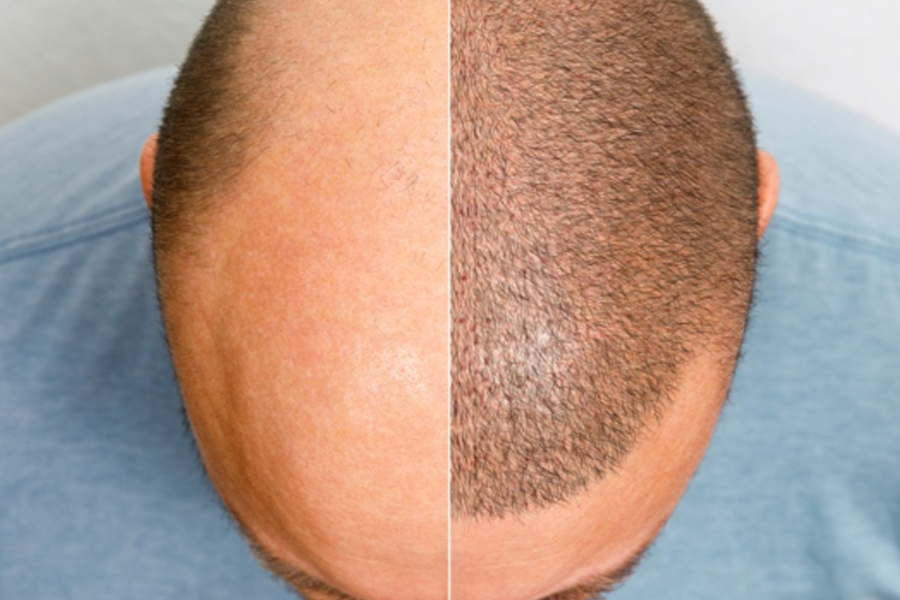It can be challenging to find a truly exceptional hair transplant surgeon amidst the numerous clinics that claim to have the best professionals. The rise of digital media has made it easier to access information, but it has also made it harder to rely on traditional “word of mouth” recommendations. However, with careful research and the right approach, it is still possible to find a skilled hair transplant surgeon who can deliver outstanding results. Modern hair transplant procedures aim to create a natural-looking hairline and promote maximum hair growth in bald areas, thanks to advanced techniques and innovative methods that were not available in the past. During the procedure, hair grafts are harvested from areas of the body with permanent hair roots, such as the back and sides of the head, and transplanted to the areas with hair loss. In some cases, body hairs can also be used as donor locations.
The process of hair transplant involves more than just moving hair grafts; it requires thorough planning beforehand, a task that should be expertly handled by a skilled hair transplant surgeon. The industry for hair transplant in Jaipur has gained significant popularity due to the presence of highly acclaimed hair transplant surgeons. Dr. Suneet Soni, a renowned hair transplant surgeon in India, has earned global recognition for his exceptional surgical skills and ability to deliver top-notch results. He is considered one of the premier hair transplant surgeons in Jaipur and is highly regarded worldwide for his expertise in hair transplant procedures. Medispa hair transplant clinic caters to numerous patients annually, providing them with the opportunity to achieve their desired hair transplant results at a reasonable hair transplant cost in Jaipur.
How to look after the short term side effects associated with the procedure?
To care for the short-term complications associated with a hair transplant, there are a few key steps to follow. Swelling, which may affect the forehead and eyebrows, typically resolves within a few days.
1. Swelling after hair transplant:
To help reduce swelling, it is recommended to sleep with the head elevated at a 45-degree angle and wear a headband for at least 2 hours a day for 2 days.
2. Itching:
Itching is another common side effect that can be managed by regularly cleaning the scalp and using the prescribed lotion provided by your doctor.
3. Mild discomfort:
There is a chance of experiencing mild discomfort following the hair transplant procedures. However, this pain is typically manageable. If you desire relief, you can take painkillers as directed by the hair transplant doctor.
4. Pimple formation on the scalp:
The occurrence of pimples on the scalp may cause concern for patients, but they actually indicate the beginning of the hair growth cycle, which is a positive sign.
Numbness: Numbness does not require any specific treatment strategy and usually resolves on its own within a few months.
Instructions to take care of scalp after hair transplant
1. It is crucial to strictly adhere to the postoperative instructions provided after a hair transplant procedure. These instructions are designed to ensure the best possible results and minimize any potential risks. Following the guidelines for at least 10 days is essential to maintain the effectiveness of the treatment and prevent any complications. To ensure long-lasting results, it is important to follow the recommended dos and don’ts after the procedure.
2. PRP therapy, also known as Platelet-Rich Plasma therapy, can help accelerate the healing process and stimulate hair follicle growth. PRP consists of concentrated platelets rich in growth factors, creating an optimal environment for cell growth and repair. This treatment has become increasingly popular for promoting faster recovery post hair transplant. Typically, PRP injections are administered in three sessions, spaced 4-6 weeks apart, followed by a maintenance phase every 4-6 months.
3. Maintaining Hygiene:
Following the hair transplant procedure, the patient will receive detailed instructions on how to properly maintain hygiene at the recipient site in order to achieve optimal results. A professional hair wash will be scheduled for the patient on the day after the surgery, followed by self-washing starting from the fifth day. From the fifth day onwards, it is important for the patient to regularly wash their hair as instructed by the surgeon. Applying the recommended lotion is crucial to keep the recipient area clean. To aid the integration of the newly transplanted follicles, it is advised for patients to wear loose-fitting hats. When wearing or removing the cap, caution should be exercised to avoid rubbing the recipient region. To ensure proper hygiene, it is important to refrain from swimming, engaging in strenuous exercise, and participating in activities that may cause excessive sweating. Additionally, any contact with the recipient region should be strictly avoided during the initial days. Overall, maintaining good cleanliness is vital to prevent any complications and promote optimal hair growth.
4. Proper Nutrition:
Eating a well-balanced diet is essential for maintaining a healthy lifestyle. Following a hair transplant, it is crucial to consume a diet that supports hair growth by providing essential nutrients. Incorporating vitamins C, A, D, iron, and zinc into your daily meals can greatly benefit hair development and overall health.
5. Post-Transplant Care:
It is not recommended to touch the recipient area immediately after a hair transplant to avoid the risk of infection. Patients should gently massage the recipient area after 9-10 days to eliminate any scabs or flakes that may have formed around the newly transplanted hair follicles, as they can hinder the growth of new follicles. Massaging the area after the initial 10 days will improve blood circulation, aiding in the healing and development of the treated area.
For further guidance, consider consulting a Medispa in Delhi or Jaipur for any additional inquiries. We are here to assist you in achieving a successful hair transplant procedure.


